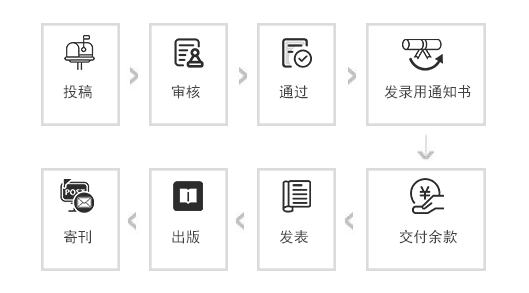Language Awareness



- 中国知网数据库(CNKI)全文收录期刊
- 中国核心期刊(遴选)数据库收录期刊
- 中国万方数据库全文收录期刊
- 中国维普科技期刊数据库收录期刊
- 中国龙源数据库全文收录期刊
- 中国期刊网全文收录期刊



中国高校科技期刊研究会第9次会员代表大会在北京召开,中宣部出版局副局长张怀海、教育部科学技术与信息化司一级巡视员张国辉等领导出席会议并发表..
英文简介: Language Awareness encourages and disseminates work which explores the following: the role of explicit knowledge about language in the process of language learning; the role that such explicit knowledge about language plays in language teaching and how such knowledge can best be mediated by teachers; the role of explicit knowledge about language in language use: e.g. sensitivity to bias in language, manipulative aspects of language, literary use of language. It is also a goal of Language Awareness to encourage the establishment of bridges between the language sciences and other disciplines within or outside educational contexts. Language Awareness is an international forum for the reporting and critical discussion of language awareness research and practice, and for the building and development of relevant theory. The journal is open to contributions from a broad range of research approaches: qualitative and quantitative, established and innovative. It welcomes work dealing with a wide variety of languages and international contexts. The journal operates with a broad definition of language awareness. It embraces critical perspectives and consciousness-raising, extends to literary awareness, and integrates awareness of other (i.e. non-linguistic) areas of human communication. As a general guide, papers tend typically, but not exclusively, to fall within the following areas: Exploration of the means to develop one's language awareness and evaluation of the benefits to be derived from so doing, whether through metalinguistic introspection and reflection or through mediated explicit knowledge about language and conscious understanding of how languages work, of how people acquire, learn and teach languages, how they use them and are influenced by them. Investigation and critical understanding of the beliefs and attitudes about language, and the effects these have on language use, learning, and teaching, and their effects on the conduct of people's everyday lives and their interpersonal and intergroup relations. Papers may consider aspects of language awareness across the lifespan, from earliest development in children through to the elderly. They may focus on a wide range of contexts, including all levels and types of educational and training settings, all types of communication-sensitive professional fields (e.g. law, health, counselling, politics, marketing), as well as communication in wider communities and cultural settings, and relating to salient social issues such as ageism, racism and sexism. Contributors should not feel restricted by existing disciplinary boundaries, especially where their work seeks to build innovative and symbiotic bridges between language and communication sciences and other disciplines within or outside the educational context.中文简介:(来自Google、百度翻译)语言意识鼓励和传播以下工作:语言显性知识在语言学习过程中的作用;语言显性知识在语言教学中的作用,以及如何最好地由教师来中介;语言显性知识在语言教学中的作用。语言使用:如对语言偏见的敏感度、语言的操纵性、语言的文学使用。它也是语言意识的一个目标,目的是鼓励在教育背景内或教育背景外的语言科学和其他学科之间建立桥梁。 语言意识是一个国际论坛,用于报告和批判性讨论语言意识的研究和实践,以及建立和发展相关理论。该杂志对来自广泛研究方法的贡献开放:定性和定量、既定和创新。它欢迎处理各种语言和国际背景的工作。 《华尔街日报》对语言意识有着广泛的定义。它包含了批判的观点和意识的提升,延伸到文学意识,并整合了人类交流的其他(即非语言)领域的意识。作为一个总的指南,论文通常(但不是唯一)属于以下领域: 探索培养一个人语言意识的方法,并评价由此产生的益处,无论是通过元语言的反省和反思,还是通过中介的语言显性知识和对语言如何工作的有意识理解,人们如何获得、学习和教授语言,以及他们如何使用语言。并受其影响。 对语言信仰和态度的调查和批判性理解,以及这些信仰和态度对语言使用、学习和教学的影响,以及它们对人们日常生活的行为、人际关系和群体间关系的影响。 论文可能会考虑到从儿童到老年人的早期发展过程中语言意识的各个方面。他们可能关注广泛的背景,包括各级和各类教育和培训环境、各类沟通敏感专业领域(如法律、健康、咨询、政治、营销),以及更广泛的社区和文化环境中的沟通,以及与年龄歧视、RA等突出的社会问题有关的。CISM和性别歧视。贡献者不应感到受到现有学科界限的限制,尤其是当他们的工作试图在语言和传播科学以及教育背景内或教育背景外的其他学科之间建立创新的、共生的桥梁时。










英文简介: Language Awareness encourages and disseminates work which explores the following: the role of explicit knowledge about language in the process of language learning; the role that such explicit knowledge about language plays in language teaching and how such knowledge can best be mediated by teachers; the role of explicit knowledge about language in language use: e.g. sensitivity to bias in language, manipulative aspects of language, literary use of language. It is also a goal of Language Awareness to encourage the establishment of bridges between the language sciences and other disciplines within or outside educational contexts. Language Awareness is an international forum for the reporting and critical discussion of language awareness research and practice, and for the building and development of relevant theory. The journal is open to contributions from a broad range of research approaches: qualitative and quantitative, established and innovative. It welcomes work dealing with a wide variety of languages and international contexts. The journal operates with a broad definition of language awareness. It embraces critical perspectives and consciousness-raising, extends to literary awareness, and integrates awareness of other (i.e. non-linguistic) areas of human communication. As a general guide, papers tend typically, but not exclusively, to fall within the following areas: Exploration of the means to develop one's language awareness and evaluation of the benefits to be derived from so doing, whether through metalinguistic introspection and reflection or through mediated explicit knowledge about language and conscious understanding of how languages work, of how people acquire, learn and teach languages, how they use them and are influenced by them. Investigation and critical understanding of the beliefs and attitudes about language, and the effects these have on language use, learning, and teaching, and their effects on the conduct of people's everyday lives and their interpersonal and intergroup relations. Papers may consider aspects of language awareness across the lifespan, from earliest development in children through to the elderly. They may focus on a wide range of contexts, including all levels and types of educational and training settings, all types of communication-sensitive professional fields (e.g. law, health, counselling, politics, marketing), as well as communication in wider communities and cultural settings, and relating to salient social issues such as ageism, racism and sexism. Contributors should not feel restricted by existing disciplinary boundaries, especially where their work seeks to build innovative and symbiotic bridges between language and communication sciences and other disciplines within or outside the educational context.中文简介:(来自Google、百度翻译)语言意识鼓励和传播以下工作:语言显性知识在语言学习过程中的作用;语言显性知识在语言教学中的作用,以及如何最好地由教师来中介;语言显性知识在语言教学中的作用。语言使用:如对语言偏见的敏感度、语言的操纵性、语言的文学使用。它也是语言意识的一个目标,目的是鼓励在教育背景内或教育背景外的语言科学和其他学科之间建立桥梁。 语言意识是一个国际论坛,用于报告和批判性讨论语言意识的研究和实践,以及建立和发展相关理论。该杂志对来自广泛研究方法的贡献开放:定性和定量、既定和创新。它欢迎处理各种语言和国际背景的工作。 《华尔街日报》对语言意识有着广泛的定义。它包含了批判的观点和意识的提升,延伸到文学意识,并整合了人类交流的其他(即非语言)领域的意识。作为一个总的指南,论文通常(但不是唯一)属于以下领域: 探索培养一个人语言意识的方法,并评价由此产生的益处,无论是通过元语言的反省和反思,还是通过中介的语言显性知识和对语言如何工作的有意识理解,人们如何获得、学习和教授语言,以及他们如何使用语言。并受其影响。 对语言信仰和态度的调查和批判性理解,以及这些信仰和态度对语言使用、学习和教学的影响,以及它们对人们日常生活的行为、人际关系和群体间关系的影响。 论文可能会考虑到从儿童到老年人的早期发展过程中语言意识的各个方面。他们可能关注广泛的背景,包括各级和各类教育和培训环境、各类沟通敏感专业领域(如法律、健康、咨询、政治、营销),以及更广泛的社区和文化环境中的沟通,以及与年龄歧视、RA等突出的社会问题有关的。CISM和性别歧视。贡献者不应感到受到现有学科界限的限制,尤其是当他们的工作试图在语言和传播科学以及教育背景内或教育背景外的其他学科之间建立创新的、共生的桥梁时。
来稿要求:
论点新颖、论证严密、论据充足、文字精练。论文字数:5000字符-8000字符为宜,图表也要计算在内,不包括英文摘要关键词。
标 题:
文章标题要言简意赅,30字以内。作者署名:署真实姓名,注明作者单位、单位所在省市和邮政编码。摘 要:要用第三人称概括全文,300字以内。
关 键 词:
用3~8个关键词术语反映论文主题。专用符号:名词、术语、数字、计量单位、标点符号和数学符号等,必须符合国家标准;外文人名、地名和术语需译成中文。
图表格式:
文中插图与表格放在相应正文之后,分别按出现顺序用图1、图2或表1、表2统一编号。插图应为黑白色,其序号、标题及注释居中放在图的下方,表格的序号及标题置于表格上方,表注放在表格的下方(建议:由于篇幅限制,除核心期刊外尽量不用或少用图表)。
正文注释:
采用尾注形式,注释号①,②,③等标在相应正文右上角。
章节体例:
章节标题为:一级标题不编号,用黑体居中排,二级标题不编号,用楷体放在相应的文字段首与正文空一字格接排正文。 三级标题分别用1.2.3.顺序编号。文中接排标题用(1),(2)编号。
参考文献:
参考文献置于正文之后,近5年的不少于3条,用[1],[2]……顺序编号,如文章中有内容需要解释请用尾注形式。参考文献不全者不能进入审稿阶段。{参考文献格式如下:(1)图书:作者.书名(版本)[M].出版所在地: 出版社,出版年:(1)页码.
(2)期刊:作者.题目[J].期刊名,年,卷(期):页码.
(3)电子参考文献:作者.题目[OL].(文章的发表日期).[本文引用日期].作者简介:来稿者请附个人简介,内容包括姓名(出生年—),性别,籍贯,民族,学历,工作单位,职称,研究方向,通讯地址,联系电话及电子信箱。
一般情况下,您将在3个工作日内收到审稿结果。如文章有很强的时效性,请说明需要最晚刊发时间。
| 论文编号 | 作者姓名 | 论文题目 | 录用情况 |
|---|---|---|---|
| TG251-13579 | 韩丽炘 孟涛 温娟娟 刘晓琴 | 基于互联网的CBL+TBL教学法在病理学实验教学中的应用 | 已录用 |
| TG251-13681 | 邹隆强 杨清余 钟鸿路 李正南 陈 | 医学运动康复联合消肿止痛方治疗急性踝关节扭伤临床研究 | 已录用 |
| TG251-13794 | 林雨慧 陈霄雯 郑颖彦 朱永凯 贾 | 基于SWOT模型的儿童专科医院临床研究发展策略分析 | 已录用 |
| TG251-13762 | 郑鸿雁 | 重复经颅磁刺激治疗肝脾不调型功能性肛门直肠痛的临床研究 | 已录用 |
| TG251-13891 | 袁召1 赵会谢2 赵海深3 | 真武汤治疗阳虚水泛型慢性心力衰竭患者的临床研究 | 已录用 |
| TG251-13536 | 王杰1 张蕾蕾2 | 血脂和载脂蛋白水平与分化型甲状腺癌及其病理学特征的相关性探究 | 已录用 |
| GD24-5203 | 单一青 高鹏慧 姚瑶 | 思维导图护理对宫颈癌患者行腹腔镜术后康复的影响 | 已录用 |
| GD24-5217 | 林秀娟 梁静文 刘美仙 陈惠贤 | 加速康复外科管理模式在胸腔镜肺段切除术患者围手术期护理中的应用效果 | 已录用 |
| GD24-5213 | 杨素雯 何洁芳 陈妙霞 廖景升 | 健康行为改变整合理论对于宫颈癌晚期放疗患者依从性及自我效能的影响 | 已录用 |
| GD24-5199 | 杨月惠 王凤婷 | 个体护理计划在心脏瓣膜置换手术围手术期患者中的应用 | 已录用 |
邮箱:cnkibianjibu@163.com
QQ:
扫码联系: